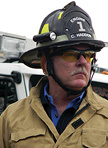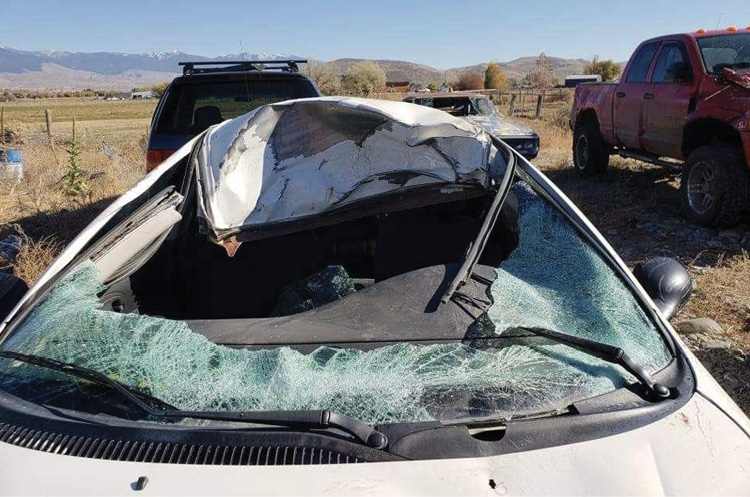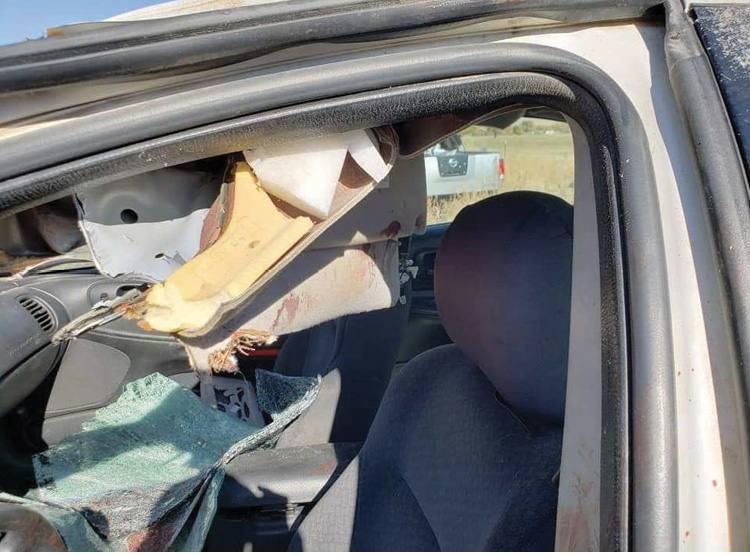Carl j. Haddon
Here in the Rocky Mountains of Idaho, we have both unique and common extrication challenges. Some of these involve available volunteer staffing, lack of timely mutual aid, poor radio and satellite communications because of terrain, vehicles into the river, and a number of other factors that go with the business of firefighting and technical rescue in this beautiful part of the country.

Probably the single biggest challenge that we face regarding these obstacles is performing extrication operations in what we know as harsh winter weather environments. As it is with many other northern areas, this struggle is very real. Returning from a few weeks of working with departments all over the great state of Alaska put our winter struggle here in “the lower 48” into perspective.
We are “used to” daily winter temperatures in the single digits and below zero. We expect to see a decent amount of snow and ice on our highways. “Really cold” to us means 20 below zero for a few days at a time. My fire district is 2,400 square miles, and it can easily take well over an hour and a half to drive from one end of the district to the other, depending on weather. After spending time with many firefighters from all over Alaska and seeing their winter vehicle rescue and personnel survival challenges, our struggles pale in comparison. I share this information with you because I hope there is some takeaway for you and your department (as there was for me) to help enhance the safety and effectiveness of your winter operations, wherever you may serve.


1 2 These photos are examples of damage done by hitting a giant moose in Alaska with a vehicle. (Photos by author.)
CHAINING YOUR SHOES
One of my first winter assignments in the Last Frontier was with some great firefighters from the Anchorage (AK) Fire Department. Driving from my hotel to the training site, I was blown away at the amount of ice on all the roadways after a relatively minor weather system. The highway was literally littered with vehicles that had slid off of the roadway, rolled-over vehicles, and vehicles that had collided with each other. None of the occupants of these wrecks seemed to have any kind of footing, regardless of their choice of footwear. What didn’t strike me until I arrived at the training site was that none of the firefighters on any of the aforementioned scenes seemed to have any trouble walking and working on the icy surfaces. It turns out that these firefighters from Anchorage have “industrial strength” boot chains for their footwear. Not only do they “have” these chains for their boots but, according to a senior captain, “We are departmentally required to wear them at all times during winter responses.”
Yes, I can see some challenges and obstacles of wearing snow and ice chains on your boots (i.e. climbing ground ladders, metal roofs, etc.). However, I can’t tell you how many times I’ve climbed down out of the truck wondering if I was going to end up underneath said truck because of the icy highway conditions prior to having a sand truck show up to add traction at the scene. To some, the idea of boot chains for traction may sound trivial in the grander scheme of extrication operations, but remember that today’s rescue tools weigh an average of 43 pounds, and we are often tasked with using them in less than optimal conditions. I want my crew to be as sure-footed as possible both for the job at hand as well as their individual well-being.
EXTREME TEMPERATURES
My travels also brought me to the interior of Alaska, where I was based in the North Pole area of Fairbanks. This is the area where I learned what “winter vehicle rescue operations” are all about.
It was the week after Thanksgiving. Daylight at this time of year is a treasured commodity as it’s when Alaskans prepare to spend the majority of their winter days and nights in darkness. At about 9 a.m., it was finally light enough to see outdoors without a flashlight. As I opened the door and prepared to head outside, I looked at the thermometer. It read -35°F! By the time I reached my vehicle, the frozen “snotsicles” had literally occluded both of my nostrils. I was only walking to my car on my way to visit a couple of departments north of Fairbanks. I wondered how firefighters dealt with this condition on scene with heart rates and respirations elevated. This was to say nothing of their being able to maintain finger dexterity with hand tools and such. By the way, -35°F is usually about 20 degrees warmer than their “cold weather.”
Getting down to the nuts and bolts of winter extrication issues, I learned some interesting things. Many of you know that I prefer traditional hydraulic rescue tools for standard and heavy-duty operations. I’m not opposed to battery-powered tools per se; however, I believe they have their place and specialized use. These folks in the interior of Alaska see things differently than I do, and they taught this old dog a couple of new tricks.
With the new and improved lithium ion battery technology, today’s battery-powered tools offer advantages to these rescuers that we don’t have to consider to the same extent. Traditional hydraulic tools are subject to extreme heat and cold considerations that can and do cause catastrophic system failures from time to time. The newer battery-powered tools don’t seem to have these issues. I was also reminded that when traveling the same or longer distances to winter calls than even we do, the tools and equipment can’t be kept as warm. Items like hydraulic hoses, power units, hose fittings, and other things don’t play as nicely at -50°F as today’s newer battery-powered tools do. Additionally, with the way Alaska’s highway system is constructed, with the obvious exception of city centers, vehicles involved in crashes here most often wind up off the highway and down into a drainage, bog, or scrub pine forest.
Understand that there are pros and cons to both sides of this equation. The chief reminded me that, in his opinion, the weakest link to the battery technology is the battery. After all, the battery is the “power unit” or at least the fuel for the power unit of these tools. Extra vigilance is taken to make sure that all the batteries for this equipment are maintained to peak performance levels.
In harsh-weather environments, crews are rotated through rehab at shorter intervals than those of us down here would expect. Safety officers are expected not only to maintain safe operations but also to constantly assess the well-being of the crew on scene.
ANIMAL HAZARDS
Here in the Rockies, some of the biggest contributors to vehicle wrecks are big game animals. We have deer, elk, and big horn sheep crossing the highway en route to and from the river for water in the morning and the evening. Alaska doesn’t have a lot of deer and elk. It does have giant moose that dwarf our 1,000- to 1,200-pound elk. When a vehicle strikes a moose, it is almost inevitable that it will take the animal’s legs out from underneath it. This causes the 1,200- to 1,500-pound moose to often land on top of—or in through the windshield of—the passenger vehicle. This scenario also lends itself to many unique rescue factors that most of us don’t have to deal with when it comes to vehicle rescue situations. When I heard about the moose thing, I thought, “OK, but how often does something like that really happen?” My answer came from a digital highway sign that I saw on my way back to the airport. It read that since July 1 (insert digital counter), 147 moose had been killed on just that stretch of Alaskan highway!
Once again, I’m humbly reminded that vehicle rescue is NOT a “one-size-fits-all” discipline. From something as simple and very often overlooked as stable footing in icy conditions being corrected with commercially available boot chains, to traffic incident management in a place where it is dark during the day in winter months, to proper arctic weather rescue tool choice and crew well-being monitoring, we all have unique and common considerations that go into our vehicle rescue operations. We all have things to teach but, more importantly, we all have things to learn.
Stay safe, and watch out for moose.
CARL J. HADDON is a member of the Fire Apparatus & Emergency Equipment Editorial Advisory Board and the director of Five Star Fire Training LLC, which is sponsored, in part, by Volvo North America. He served as assistant chief and fire commissioner for the North Fork (ID) Fire Department and is a career veteran of more than 25 years in the fire and EMS services in southern California. He is a certified Level 2 fire instructor and an ISFSI member and teaches Five Star Auto Extrication and NFPA 610 classes across the country.

